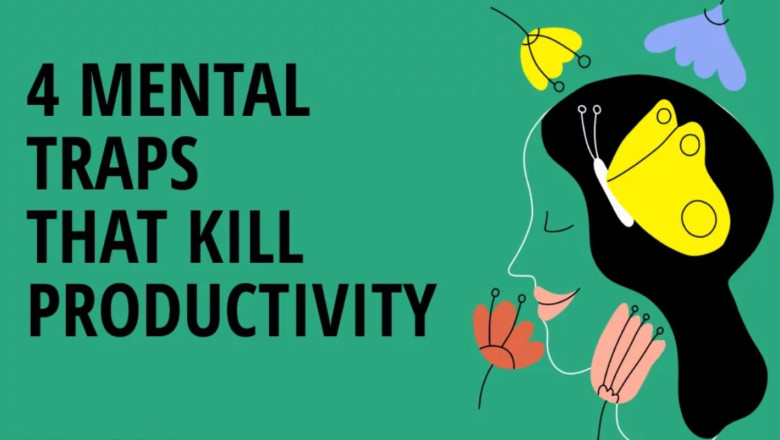
views
4 Mental Traps That Kill Productivity
Productivity has many enemies: too many meetings, external triggers like interruptions from coworkers, and multitasking the wrong way, to name a few.
But more often than not, it’s mental traps that trip us up.
“Mental traps are habitual modes of thinking that disturb our ease, take up enormous amounts of our time, and deplete our energy without accomplishing anything of value,” psychology professor André Kukla wrote in his book, Mental Traps: The Overthinker’s Guide to a Happier Life.
Learning to recognize these mental traps disarms them, enabling us to move past their threat to our productivity.
Here are some common mental traps, accompanied by a solution to set you free.
According to the American Psychology Association, the planning fallacy, is “the tendency to underestimate the amount of time needed to complete a future task, due in part to the reliance on overly optimistic performance scenarios.”
Underestimating the time you need for certain tasks means that you’re constantly unable to stick to a timeline. If you’re a freelancer whose clients have strict deadlines or part of a team that depends on you to complete a project as expected, meeting deadlines is crucial to your professional success.
Misjudging how much time you need to tackle tasks also means you’ll try to accomplish more than is possible in one day, which will cause an imbalance in your life. If you take on too much at your job, you might have to reallocate hours reserved for other domains of life—yourself and your relationships—to finishing those tasks.
Those high expectations, plus the low control you have in meeting them, are a guaranteed formula for burnout. After sacrificing hours previously meant for fun, self-care, or sleep, you’re likely to enter a state of emotional, mental, and often physical exhaustion brought on by prolonged or repeated stress.
On their own, to-do lists are a trap. With no constraints, they don’t show force prioritization trade-offs nor help you stick to a realistic schedule.
Timeboxing, on the other hand, is a time management technique by which you reserve a specific period of time in your calendar for each activity. It’s a great way to beat the planning fallacy because it enables you to visualize your time. (If you’re new to timeboxing, try this schedule maker template to get started.)
You can use time tracker applications to monitor how much time you usually need to complete a work project, a recipe, a workout session, and more. Once you have a good idea of how long something might take you, plot it in your timeboxed calendar. This should give you a good idea of what you can realistically do in one day.
Be liberal with assigning time to your tasks. Don’t limit yourself to the minutes you need for the best-case scenario of productivity—timebox for your worst-case scenario. If you finish early, then you have breathing room to take a break.
Liminal moments are transitions from one thing to another throughout our days. Have you ever opened a tab in your web browser, got annoyed by how long it’s taking to load, and opened up another page while you waited? Or looked at a social media app while walking from one meeting to the next, only to keep scrolling when you got back to your desk?
By doing these actions for “just a second” or “five minutes tops,” we’re likely to do things we later regret, like getting off track for half an hour.
Next time you feel the urge to check your phone in a moment of boredom or distraction, tell yourself to wait just 10 minutes. It’s likely that once the 10 minutes are over, your urge will be over.




















Comments
0 comment